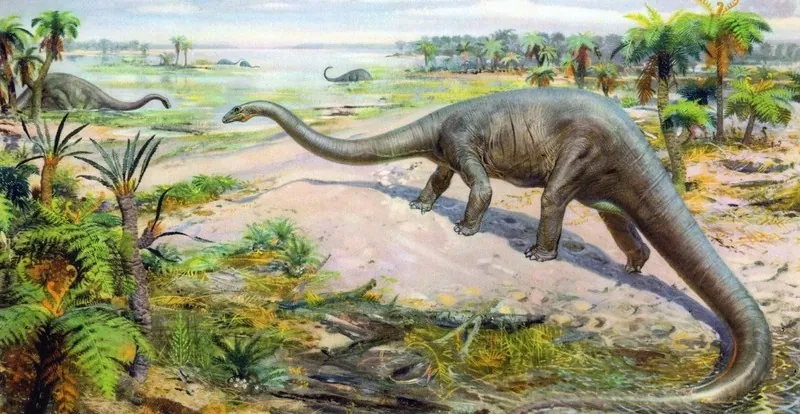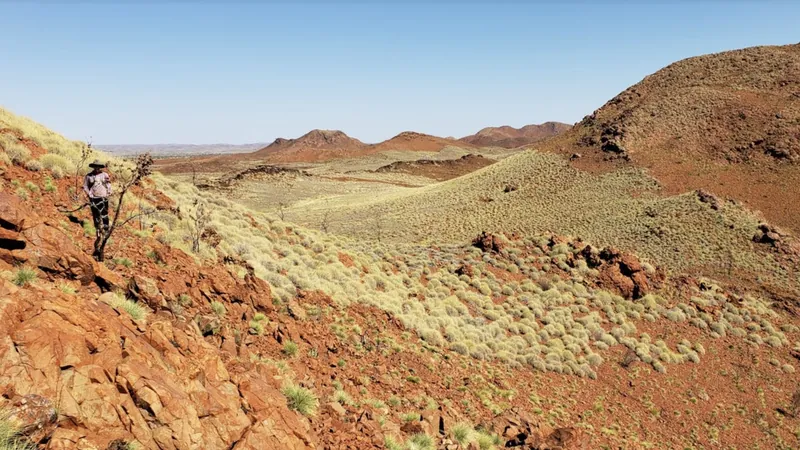
The Great Dying: The Cataclysm That Paved the Way for Dinosaurs' Dominance
2024-11-06
Author: Charlotte
In the grand tapestry of Earth's history, the evolution of dinosaurs stands as a remarkable chapter that emerged from the ashes of catastrophic extinction events. To truly grasp how these magnificent creatures ascended to become the ruling vertebrates on land, one must delve into the events that allowed their rise.
While children commonly learn about the extinction of dinosaurs around 66 million years ago due to an asteroid impact, it is crucial to highlight that their story begins with an even more cataclysmic event known as the Permian-Triassic mass extinction—darkly referred to as "the Great Dying." This devastating episode, occurring approximately 252 million years ago, obliterated around 90% of all marine species and a staggering 75% of terrestrial species. In the aftermath, the planet experienced a profound shift in its ecosystems, ushering in the conditions that would eventually favor the rise of the dinosaurs.
The Permian period was marked by an abundance of life, with lush greenery and an oxygen-rich atmosphere estimated at around 30%. However, a combination of volcanic activity, particularly the extensive Siberian traps, unleashed catastrophic forces—volcanic eruptions that released enormous quantities of greenhouse gases. The resulting climate chaos led to global warming, acid rain, and the destruction of numerous habitats, driving many species to extinction and altering the very course of life on Earth.
The fallout of this "Great Dying" set the stage for the archosaurs, the prehistoric group from which dinosaurs would emerge. With lower competition for resources and advantageous adaptations—such as efficient lungs and scaly skin that prevented dehydration—the archosaurs began to thrive. They evolved into diverse forms and eventually gave rise to the iconic dinosaurs, who flourished in the Triassic period.
Fast forward a few epochs: the end-Triassic extinction around 201 million years ago further paved the way for dinosaurs to dominate the planet. This event wiped out several competing species, such as major groups of crocodilian relatives and giant amphibians, thereby eliminating rivals and allowing dinosaurs to rise to prominence.
However, dinosaurs too would learn the harsh lesson of extinction. They faced their end approximately 66 million years ago, coinciding with another mass extinction—this time, triggered by an asteroid impact. The aftermath of this collision devastated the Earth's climate, leading to a cascade of ecological failures that claimed even those dinosaurs that adapted into the lineage of modern birds.
Today, we find ourselves facing a distinct but equally alarming scenario. Human activity is influencing climate change at an unprecedented rate, resulting in species extinctions comparable in severity to the ancient mass extinction events. Dramatic declines in bird populations and alarming losses of insect species—critical pollinators in our ecosystems—serve as stark reminders of our impact on the planet.
The extinction of the dinosaurs bears parallels to our current existential crisis. While their demise was caused by an external force, humankind is at the forefront of our current ecological struggle. As we navigate through the warning signs of climate change and biodiversity loss, it becomes imperative to recognize that, like the dinosaurs, we too must change course to avoid catastrophe.
In sum, the dinosaurs' journey from the calamity of the Great Dying to their eventual reign on Earth reminds us of the delicate balance of life. Their rise and fall align closely with Earth's environmental changes, illustrating the profound relationship between climate, extinction, and evolution. As we reflect on their legacy, we are also invited to consider our responsibility in preserving the fragile ecosystems that remain.









 Brasil (PT)
Brasil (PT)
 Canada (EN)
Canada (EN)
 Chile (ES)
Chile (ES)
 Česko (CS)
Česko (CS)
 대한민국 (KO)
대한민국 (KO)
 España (ES)
España (ES)
 France (FR)
France (FR)
 Hong Kong (EN)
Hong Kong (EN)
 Italia (IT)
Italia (IT)
 日本 (JA)
日本 (JA)
 Magyarország (HU)
Magyarország (HU)
 Norge (NO)
Norge (NO)
 Polska (PL)
Polska (PL)
 Schweiz (DE)
Schweiz (DE)
 Singapore (EN)
Singapore (EN)
 Sverige (SV)
Sverige (SV)
 Suomi (FI)
Suomi (FI)
 Türkiye (TR)
Türkiye (TR)
 الإمارات العربية المتحدة (AR)
الإمارات العربية المتحدة (AR)